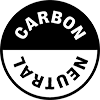What Is Lithographic Printing?
Lithographic printing, also known as litho printing, is a widely used commercial printing technique. It involves the transfer of an image from a flat plate onto a rubber blanket, which is then pressed onto the printing surface (such as paper or cardboard) to create the final print. The process relies on the principle that oil and water don’t mix. The image areas on the plate attract ink, while the non-image areas repel ink, allowing for high-quality, detailed prints with sharp edges and smooth gradients.
Which Materials Are Best for Lithographic Printing?
Lithographic printing works best with materials that have a smooth and flat surface. Litho printing is well suited to custom packaging options like folding cartons and shelf-ready packaging. The most commonly used materials for lithographic printing include:
Uncoated paper: Standard uncoated paper, such as bond paper or offset paper, is suitable for lithographic printing. It absorbs ink well and produces sharp and clear prints.
Coated paper: Coated paper has a clay or polymer coating that provides a smooth and glossy surface. It is commonly used for high-quality prints with vibrant colours and sharp details.
Cardstock: Thick and sturdy cardstock is often used for printing items like business cards, postcards, or invitations. The smooth surface of cardstock allows for crisp and vibrant prints.
Synthetic materials: Some synthetic materials, such as polyester or polypropylene, can also be used for lithographic printing. These materials offer durability and resistance to tearing or moisture, making them suitable for applications like labels and stickers.
Lithographic printing is limited when it comes to directly printing onto corrugated cardboard. Instead, a litho-printed sheet needs to be glued to the corrugated board, which is known as litho-laminating. This two-step process, involving printing and then laminating, can lead to higher setup costs. As a result, litho-laminating is often more suitable for longer packaging runs that require high-quality printing and appearance. At Packaging Supplies, we offer litho-laminated packaging for various corrugated flute profiles, including litho-printed cardboard double-wall boxes.
Why Should I Use Lithographic Printing?
Harness the power of lithographic printing to create attention-grabbing, brand-enhancing graphics on your custom packaging. Benefit from the exceptional print quality and fine detail reproduction that lithographic printing offers. With its ability to maintain great colour consistency and accurate reproduction, lithographic printing ensures that your designs shine with remarkable visual impact. Moreover, this printing technique proves to be cost-effective on larger volumes, making it the perfect choice for businesses seeking high-quality results while optimising their budget.




